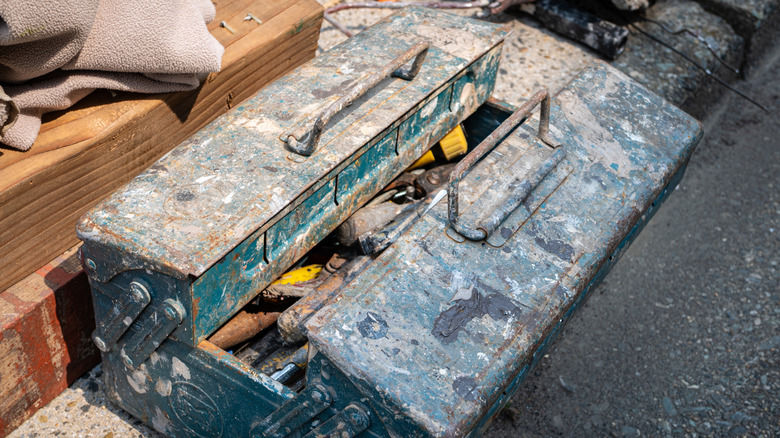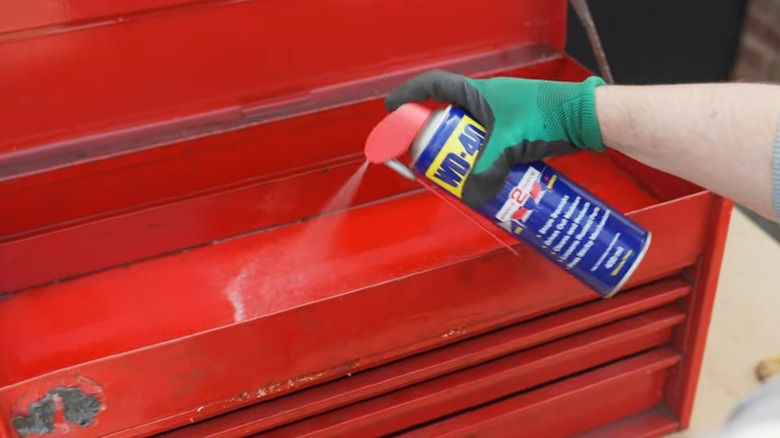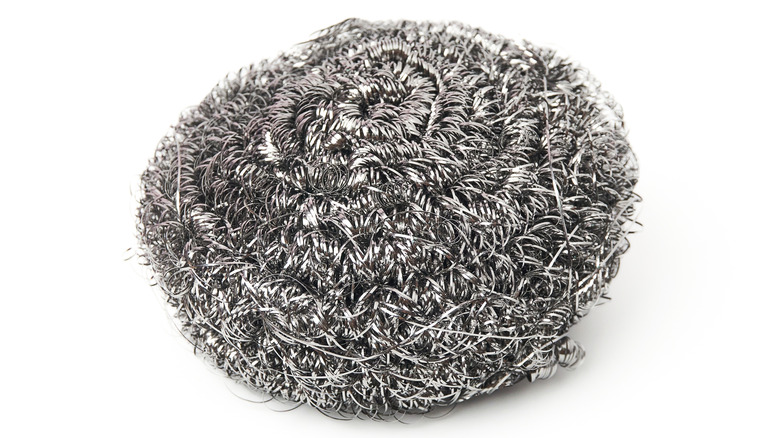Here's What You Should Use To Clean A Tool Chest
It goes without saying that whether you're talking hand or power tools, taking care of your items is important. They typically aren't cheap, so proper maintenance is key to getting the most use out of them as possible before their inevitable breakdown. What's equally worthwhile is taking care of the containers you keep your tools in. While steel toolboxes and chests are designed to be durable, with time and use, they will need to be replaced. They too can get pricey — look no further than Snap-On's most expensive toolboxes.
To keep your vessel in good shape, the first thing you should concern yourself with is proper cleaning. Despite their ability to endure bumps, scratches, and dents, tool chests should be tended to accordingly. That means using the right materials and agents to keep them looking new. The first thing you grab should be a toolbox and chest-intended cleanser.
Something like Mac Tools Toolbox Clean and Shine is a good choice, as it prevents discoloration, cracking, and other damage on materials such as chrome, aluminum, plastic, and more. These formulas, with the aid of a cloth or sponge, should do the trick getting your containers in good shape. Alternatively, you can opt for a less ready-made method. There are other concoctions good for cleaning that you can whip up or likely find at home.
You have options for toolbox cleaning
Ready-made solutions aren't all you have as far as tool chest cleaners. Some routes involve items you may already have at home such as WD-40. Yes, this multi-purpose product can do a great job maintaining a metal toolbox — one of many WD-40 hacks you'll wish you knew sooner. A video on WD-40 UK's YouTube channel shows how to do so. It's as simple as spraying down the areas you want to clean and thoroughly scrubbing with a rag or soft brush. Aside from just polishing your container, it's good for removing and preventing rust.
If you don't have WD-40 or a designated toolbox cleaner on hand, you're still not out of luck. Even something as simple as warm water with a bit of dish soap can work wonders. Using this combination with a rag or sponge should do an excellent job removing dirt and grease with a few swipes. The same can be said for a mixture of vinegar and water, which proves especially good at removing grease and water spots. With any of these solutions, though, it's a good idea to take a dry cloth to remove any excess moisture once you're done cleaning. This way, the added residue doesn't become a problem down the line.
What to avoid when toolbox cleaning
There are toolbox cleaning methods that may seem effective but could ultimately harm your cases. For instance, you want to be mindful of what you're using to wipe down your chest. While sponges and rags will sufficiently remove dirt and leave the surface unharmed, heavy-duty tools such as abrasive brushes and steel wool should be avoided. Sure, they can remove stuck-on dirt, but they'll often take the paint away, or worse, dig into the metal underneath, leaving behind unsightly scratches.
As for the cleaning products, there are key considerations to be made. If you're working with a metal-specific agent, be mindful that this could damage non-metal parts. These items could crack and corrode any wood, plastic, or rubber present if left on for too long. Even with a cleaner like WD-40, you want to do a bit of digging into what the product is best used for.
Items like WD-40 Specialist Degreaser explicitly note which types of materials they can be used on. As great as it is, there are even some things standard WD-40 should never be used on, so do some research before spraying anything on your container. Toolbox cleaning may not seem overly essential, but keeping the container in good shape and sanitary is a good practice to get into — so long as it's done right


